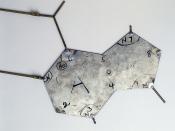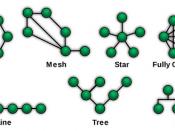As an IT manager, you have been asked to identify the advantages and disadvantages associated with various network topologies. You should also review the various cable options and discuss the factors that would govern your selection of an appropriate cable.
Network
A network consists of two or more computers that are linked to share common programs or applications, provide common facilities, provide access to shared services (e.g. database, CD-ROM libraries, printers), exchange files, or allow electronic communications. Networks are a popular means to reduce the cost of software licences and manage efficient use of resources, and can incorporate security measures to grant privileges and restrict access to certain users. They are linked through cables, telephone lines, radio waves, satellites or infrared light beams. There are three basic types of network:
÷Local Area Network (LAN) - confined to a relatively small area, e.g. building or complex; one computer is the file server and stores all software controlling the network, the other computers are work stations and may have additional software on their hard drives but are generally less powerful than the file server; they are usually connected by cables.
÷Metropolitan Area Network (MAN) - usually covers wider geographic areas, e.g. cities, districts; smaller networks are interconnected for easy dissemination of information throughout the network, e.g. government agencies, local libraries.
÷Wide Area Network (WAN) - connect large geographic areas, such as an entire State, or even globally.
LANs
The following characteristics differentiate one LAN from another:
÷Topology - the geometric arrangement of devices on the network.
÷Protocols - the rules and encoding specifications for sending data on a network, including guidelines regulating access method, allowed physical topologies, types of cabling and speed of data transfer, e.g. Ethernet, LocalTalk, Token Ring.
÷Media - how devices are connected (e.g. cable or radio waves)...


